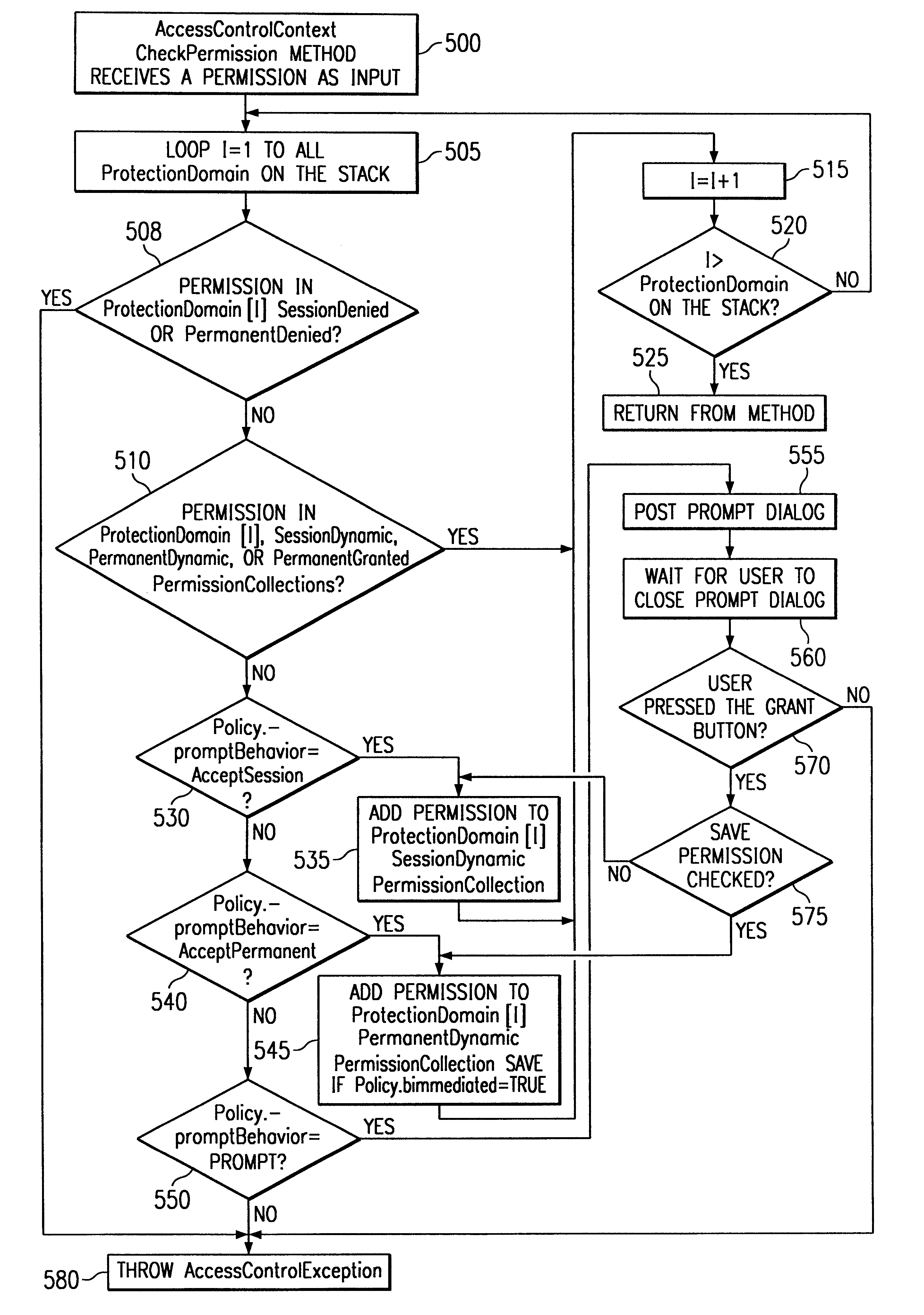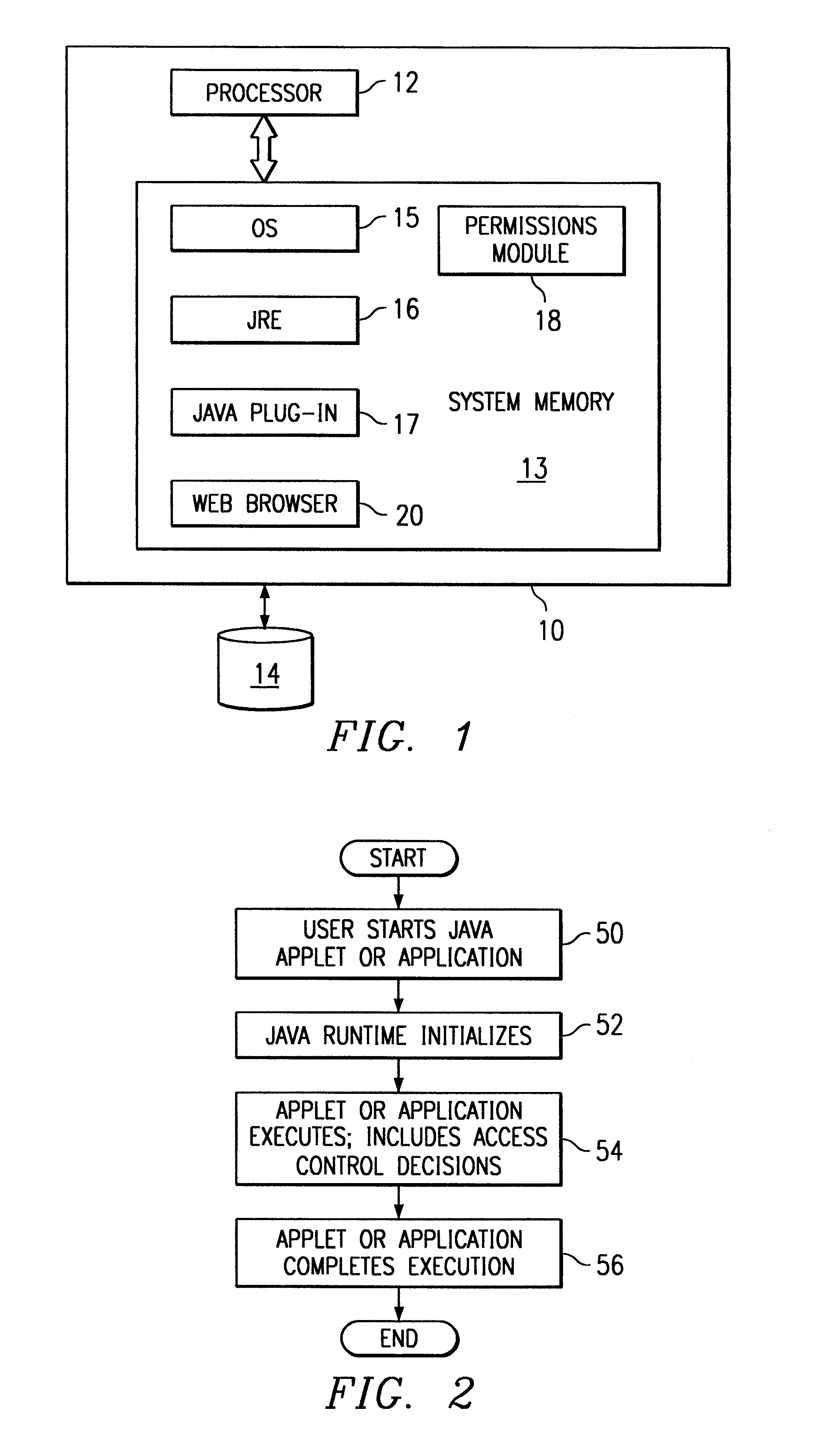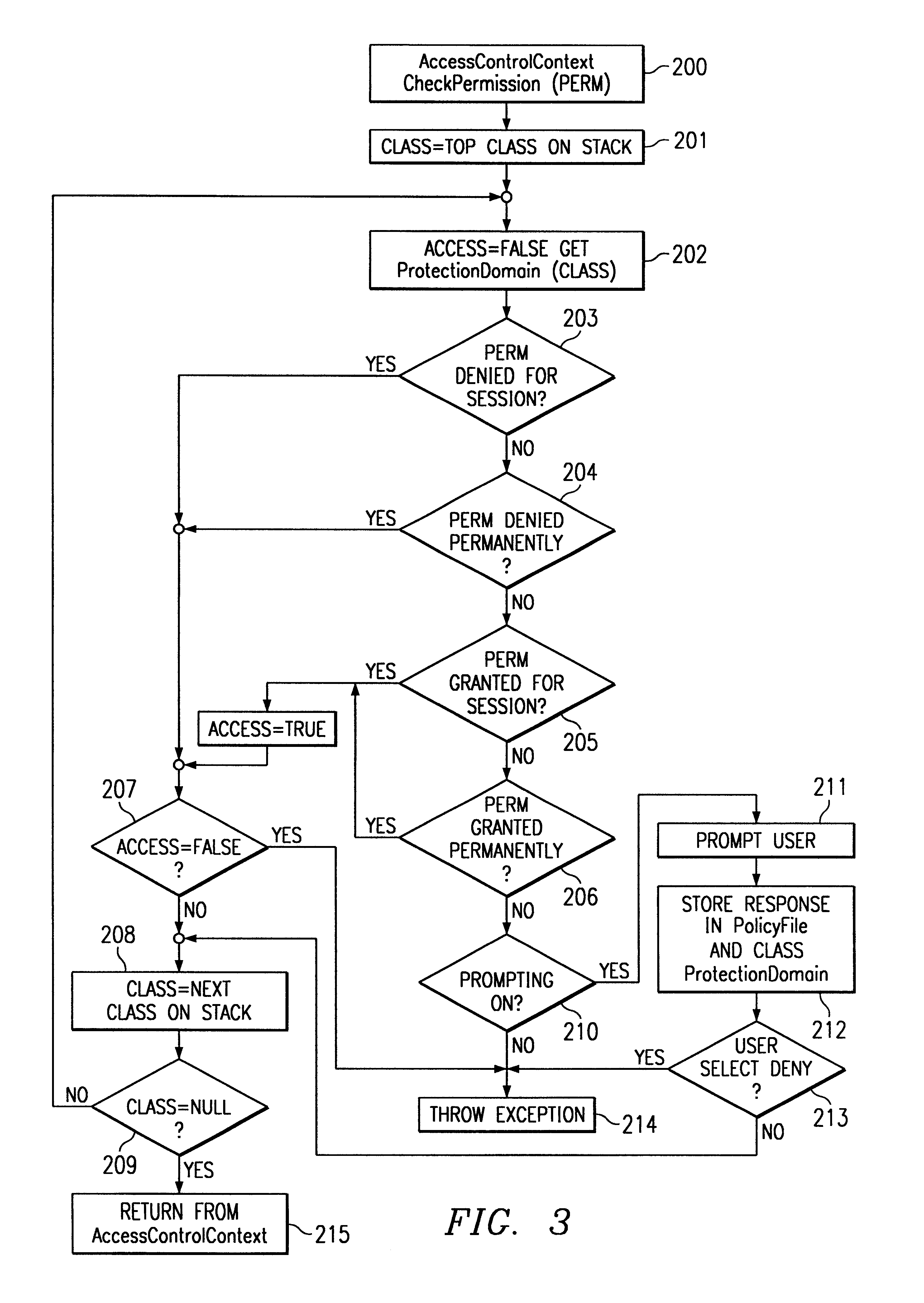Architecture for dynamic permissions in java
a dynamic permission and java technology, applied in the direction of unauthorized memory use protection, multi-programming arrangements, instruments, etc., can solve the problems of not being able to grant access to a large collection of related objects, not being able to take advantage of new jres and the functionality that they contain, and being unable to grant access to a large number of related objects
- Summary
- Abstract
- Description
- Claims
- Application Information
AI Technical Summary
Problems solved by technology
Method used
Image
Examples
Embodiment Construction
The following example illustrates the dynamic and denied permission features provided by the present invention. For illustrative purposes, the example is a simple applet that attempts to read a local file and display its contents. The source code for this applet is shown below:
import java.applet.Applet;
import java.awt.*;
import java.io.*;
public class FileReaderApplet extends Applet {
protected final TextArea textArea=new TextArea( );
String filename="c: / temp / test.txt";
String line;
public void init( ) {
try {
super.init( );
setsize (500, 300);
setLayout (new BorderLayout( ));
add (textArea, BorderLayout.CENTER);
line="This test applet attempts to read a
file.";
textArea.append(line);
line="Trying to read"+ filename;
textArea.append(".backslash.n"+line);
line="Contents of"+ filename+":";
textArea.append (".backslash.n"+line);
File f=new File(filename);
FileReader fr=new FileReader(f);
BufferedReader br=new BufferedReader(fr);
line=br.readLine( );
while(line!=null) {
textArea.append(".backslash.n"+line);
lin...
PUM
 Login to View More
Login to View More Abstract
Description
Claims
Application Information
 Login to View More
Login to View More - R&D
- Intellectual Property
- Life Sciences
- Materials
- Tech Scout
- Unparalleled Data Quality
- Higher Quality Content
- 60% Fewer Hallucinations
Browse by: Latest US Patents, China's latest patents, Technical Efficacy Thesaurus, Application Domain, Technology Topic, Popular Technical Reports.
© 2025 PatSnap. All rights reserved.Legal|Privacy policy|Modern Slavery Act Transparency Statement|Sitemap|About US| Contact US: help@patsnap.com



